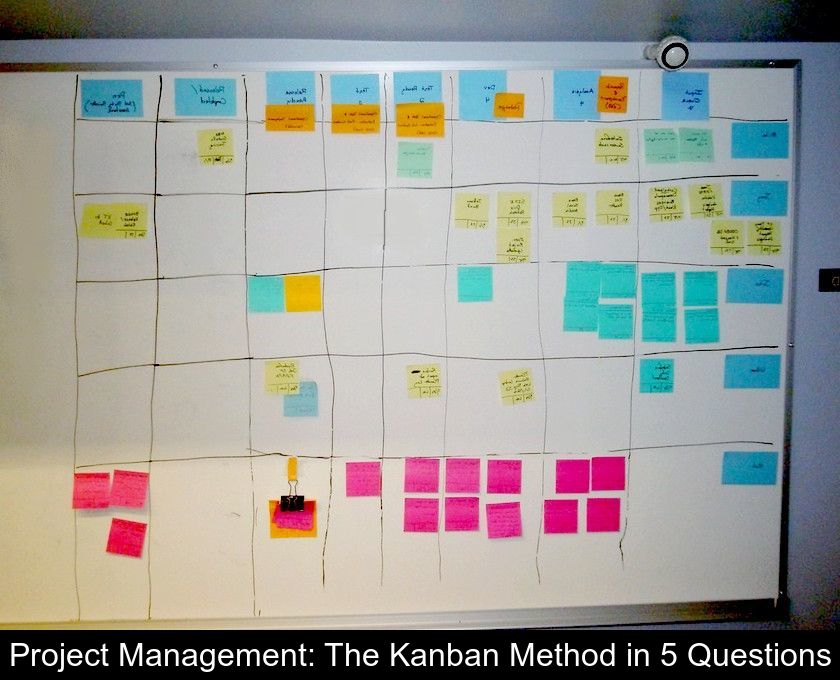Project Management: The Kanban Method In 5 Questions
Are you struggling to complete all your tasks at work and meet the given deadlines? A project management method from Japan can help you become more efficient. We invite you to discover the kanban method in 5 questions.
What is the Kanban method?
The kanban method is a work and project management method developed in the 1950s by Taiichi Ono, an engineer at Toyota.
Originally, this system was used to plan just-in-time manufacturing in the Japanese automotive industry.
Today, it is used in companies to organize work clearly and precisely within teams and to improve productivity.
2- The Kanban method, how does it work?
The Kanban method is a visual system that allows tracking of ongoing tasks and their progress using a board with cards or labels. In Japanese, the term "kanban" actually means "label".
In its simplest form, a Kanban board consists of 3 columns titled To Do, In Progress, and Done. Individual tasks to be completed are noted on cards.
Team members move cards from one column to another as work progresses. This board with dynamic content facilitates project management as it provides an instant overview of the entire project and its progression.
3- How to create a Kanban board?
The Kanban method has the advantage of requiring little material. To create a Kanban board, you simply need a board and cards.
You can use a simple whiteboard and sticky notes or equip yourself with a magnetic board and pin small cardstock sheets to it.
Today, there are even software solutions available for creating and managing virtual Kanban boards. These online tools are a very convenient solution for companies wanting to try out this project management method.
Regardless of the medium used, the first step in this method is to identify the various tasks to be performed. Each of these tasks will be represented on the board by a card or a sticky note.
For this system to be effective, do not hesitate to break down the work to be done into as many tasks and subtasks as necessary. Then assign the tasks to different team members and set a deadline for each task.
To facilitate the understanding of instructions, you can add a Comments column to your Kanban board. Moreover, using this board does not exempt you from regularly organizing meetings to discuss project progress with your teams.
4- How to adopt this method in your company?
If the previous description has made you want to try the kanban method in your business, be aware that this work method can be implemented progressively.
You don't need to radically change the organization of your teams to benefit from the advantages of this system. To start, simply create a board, explain how it works, and encourage all team members to participate.
One of the great benefits of this approach is the possibility of applying it across a wide range of sectors. Even though this method originated in the automotive industry, it remains very flexible.
It can meet diverse needs in different fields of activity and in companies of various sizes. In short, it can be tailored to the needs of your own business and used alone or in conjunction with other work methods.
What are the benefits of the Kanban method?
The Kanban method is a proven project management approach for gaining visibility and efficiency. Because it allows for a quick glance to see the progress of each individual task and the project as a whole, the Kanban board optimizes teamwork and saves time.
With this system, every project participant has access to necessary information. They know what they need to do and what others are doing. Each team member can focus on one task at a time. Meanwhile, the project manager can quickly identify problems and bottlenecks.
This work organization typically reduces timelines and satisfies clients more swiftly because work time is optimized and the company's projects move forward faster.









